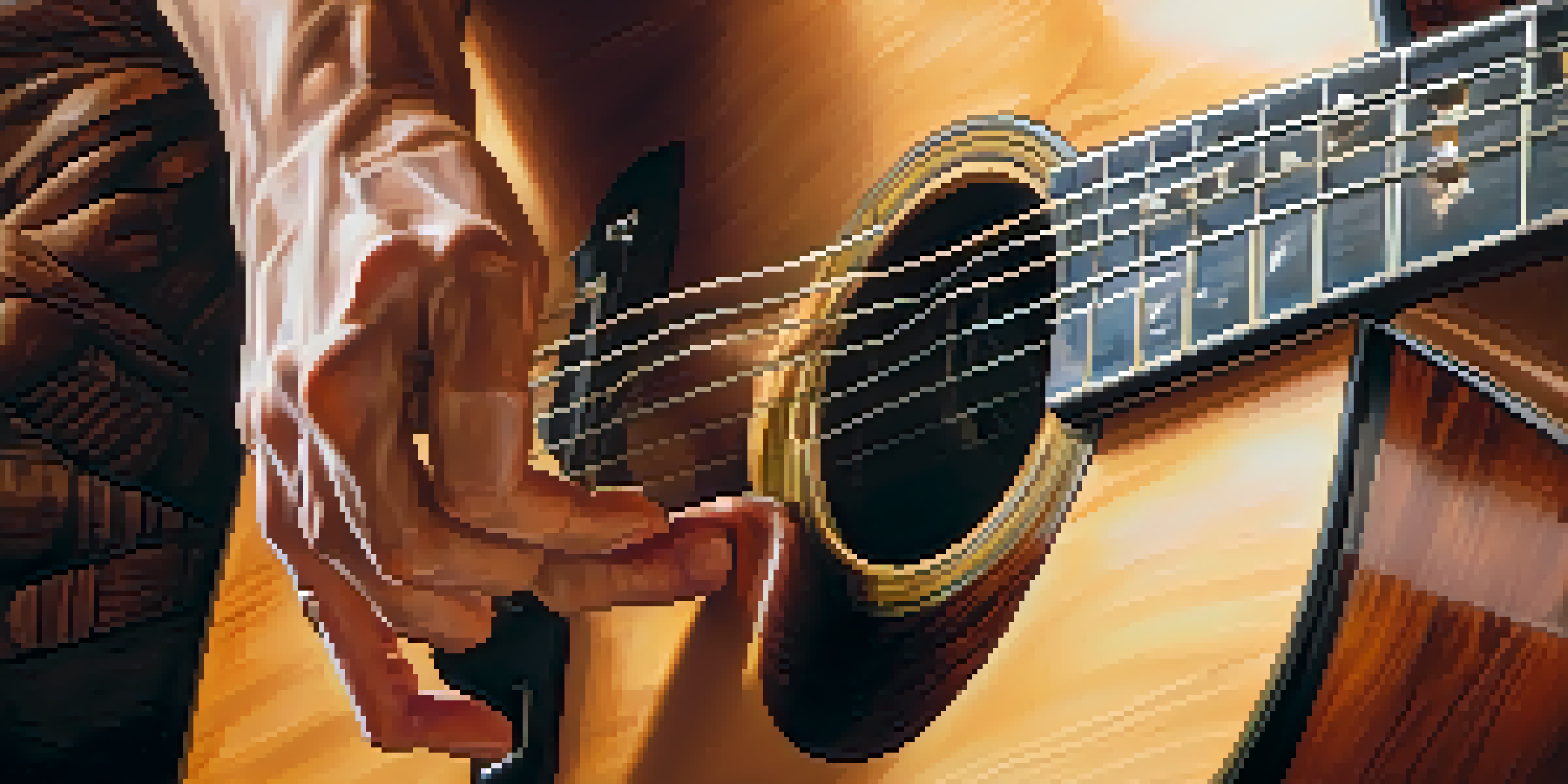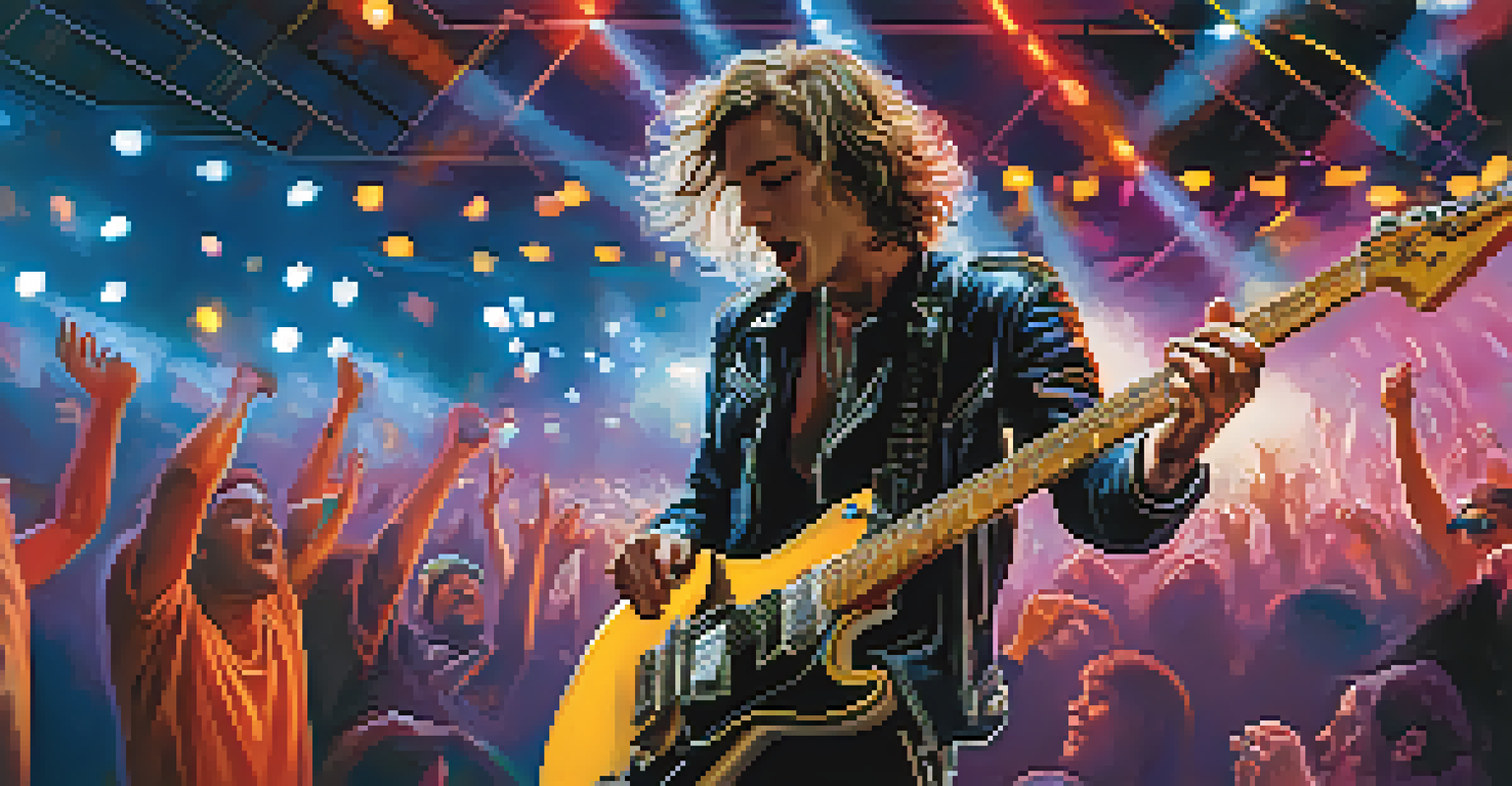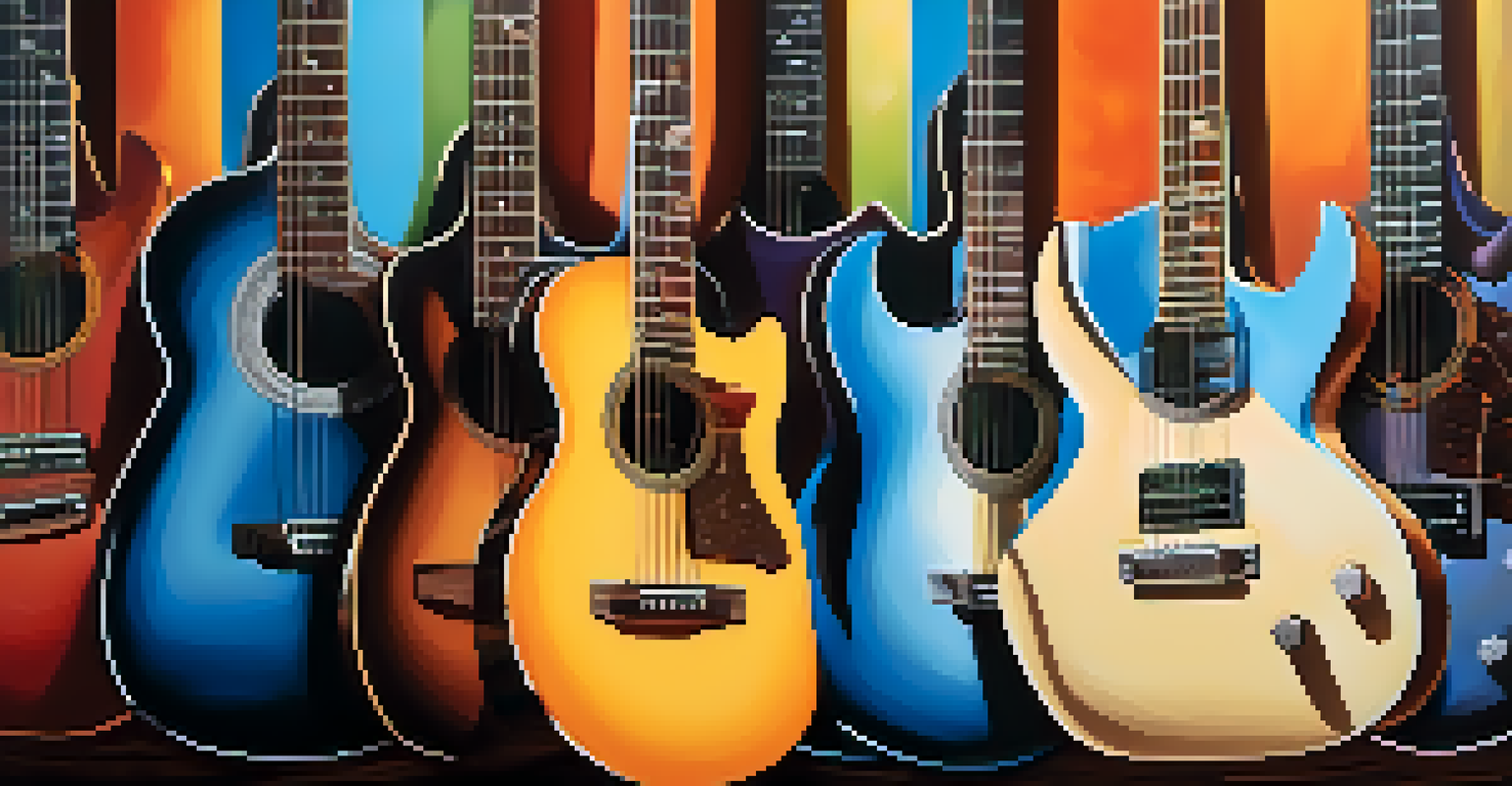Creating Characters Through Guitar Sounds and Melodies

Understanding the Emotional Power of Guitar Sounds
Guitar sounds possess a unique ability to evoke emotions, making them a valuable tool in character creation. Just as a painter uses colors to convey feelings, musicians use different guitar tones to express complex emotions. Whether it's the bright, cheerful strumming of an acoustic guitar or the haunting notes of an electric guitar, each sound resonates with specific feelings.
Music is the shorthand of emotion.
For instance, a slow, melancholic melody played on a clean electric guitar can create a sense of longing, perfectly complementing a character's backstory. On the other hand, a fast-paced riff may suggest excitement or recklessness, highlighting a character's adventurous spirit. By understanding these emotional nuances, creators can better align their characters’ journeys with the sounds that represent them.
Ultimately, the emotional power of guitar sounds serves as a vital narrative device, deeply enriching the character's experience. When you listen closely, you might find that the guitar's voice can speak volumes about who a character is, what they feel, and the journey they are on.
Creating Characters with Distinct Guitar Melodies
Distinct guitar melodies can serve as the musical signature for a character, much like a catchphrase or a memorable outfit. Think about iconic characters from movies or games; often, their themes are instantly recognizable and reflect their personality. For example, a heroic character might be associated with bold, sweeping melodies that inspire courage and determination.

In contrast, a villain might have a more dissonant or eerie melody that elicits feelings of unease. By crafting specific guitar melodies for each character, creators can enhance the audience's emotional connection and understanding of them. This technique allows listeners to immediately grasp a character's essence, even before they say a word.
Guitar Sounds Evoke Strong Emotions
Different guitar tones can express complex emotions, enriching character narratives and enhancing audience connection.
As you develop characters, consider how their unique melodies can play a role in their identity. It’s an exciting way to blend storytelling and music, allowing guitar sounds to become an integral part of who your characters are.
Using Guitar Techniques to Define Character Traits
Different guitar techniques can illustrate various character traits, adding another layer of depth to their personalities. For instance, a character that plays complex fingerpicking patterns might be perceived as meticulous or introspective. In contrast, a character who favors power chords and heavy riffs may come across as bold and brash.
The guitar is a miniature orchestra in itself.
Consider how a character’s style of playing can mirror their journey or struggles. A character who starts with simple chords may evolve into intricate solos, symbolizing personal growth and development. By aligning guitar techniques with character arcs, you create a richer, more immersive experience for the audience.
These technical choices not only define a character but also create a stronger emotional resonance with the audience. When listeners hear those specific techniques, they’re reminded of the character's journey, making it easier to connect with and remember them.
Crafting Backstories Through Guitar Soundscapes
Guitar soundscapes can be used to craft compelling backstories that inform a character's motivations and behaviors. By layering different sounds and melodies, you can create an auditory environment that reflects a character's past. This can include the warmth of acoustic strumming representing a happy childhood or dark, brooding electric riffs suggesting turmoil.
Creating a soundscape that captures the essence of a character's history allows the audience to experience their journey on a deeper level. For example, a character with a difficult upbringing may have a more aggressive and chaotic sound, while someone with a nurturing background might evoke softer, harmonious tones. These contrasts provide insight into their current struggles and decisions.
Distinct Melodies Define Characters
Unique guitar melodies act as musical signatures for characters, reflecting their personalities and enhancing audience engagement.
Ultimately, soundscapes add an immersive element to storytelling, allowing listeners to feel the weight of a character's experiences. When used effectively, guitar sounds can open a window into the character's soul, enriching the narrative.
The Role of Guitar Genres in Character Development
Different guitar genres can significantly influence how a character is perceived and developed. For instance, a bluesy, soulful character may resonate with the slow, expressive bends typical of the blues genre, while a punk character might be defined by fast, aggressive power chords. Each genre brings its own culture, emotions, and connotations that can shape a character’s identity.
By aligning a character with a specific genre, creators can tap into the rich history and emotion associated with that style. A character who plays jazz guitar may be seen as sophisticated and complex, whereas one who plays heavy metal may embody rebellion and intensity. These genre associations can create instant connections with the audience.
Moreover, incorporating various genres can allow for character growth. A character might start in one genre and evolve into another, mirroring their personal journey. This dynamic approach not only makes characters more relatable but also provides a broader canvas for storytelling.
Collaborating with Musicians for Character Soundtracks
Collaboration with musicians can greatly enhance the character creation process, allowing for a diverse range of sounds and ideas. By working with guitarists, writers can bring their character’s essence to life through music, creating an authentic soundtrack that reflects their personality. This partnership can lead to innovative sound combinations that might not be achieved alone.
For example, a writer might describe the emotional landscape of a character and let a guitarist interpret that through their playing. The result could be a unique blend of sounds that encapsulates the character's journey, making it more vivid for the audience. This collaborative approach can foster a deeper understanding of the character and their story.
Genres Shape Character Perception
Aligning characters with specific guitar genres influences how they are perceived, tapping into the emotions and cultures associated with those styles.
Ultimately, involving musicians not only enriches the character's auditory experience but also creates a sense of community among artists. It’s a beautiful way to merge storytelling and music, enhancing the overall narrative.
The Impact of Guitar Sounds on Audience Perception
The sounds of a guitar can profoundly impact audience perception, influencing how they relate to characters. When a character is introduced alongside a particular sound or melody, the audience's emotional response is often immediate. For example, a character who is introduced with a gentle acoustic guitar riff may be perceived as kind and approachable.
Conversely, a character accompanied by harsh, distorted guitar sounds might evoke feelings of tension or discomfort, setting the stage for their role in the story. This dynamic interplay between sound and character can guide the audience's emotions, shaping their understanding and empathy for the characters.

As creators, it’s essential to consider how guitar sounds influence audience perception and engagement. By thoughtfully integrating these elements, you can create a more impactful storytelling experience that resonates long after the music fades.